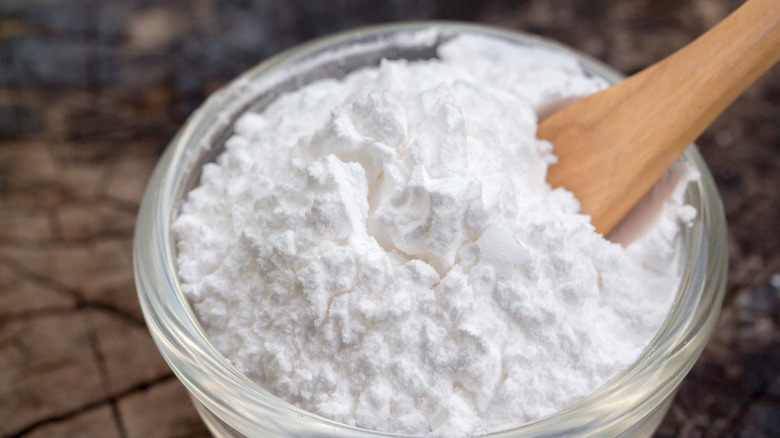The Kitchen Staple That'll Neutralize Odors When Painting
We may receive a commission on purchases made from links.
Painting is one of those jobs that seems easy in theory but is hard in practice. It's long, tedious work that requires you to have a steady hand and lots of patience for rogue drip marks. Not only is it messy, but it also stinks up your house due to the paint's VOCs. But rather than breathe in these fumes and just wait until they dissipate, you can move the process along with an ingredient you have stocked in your kitchen pantry: baking soda.
Baking soda is known for absorbing smells, which is why you'll often see an open box at the back of a refrigerator. It acts as a natural deodorizer, removing powerful aromas. But it doesn't just work in kitchen spaces. You can use the same method to clear out any paint fumes lingering in your house. Rather than turning on air purifiers or suffering headaches, you can use this inexpensive kitchen staple to remedy the issue.
How to use baking soda to remove paint fumes
To remove the dizzying scent of paint from a room, all you need is a big bag of baking soda. While a small box is enough to keep your fridge odor-free, you don't typically get strong smells inside your appliance. But since you will be dealing with chemical odors in a painted room, you will need more firepower. At a minimum, it's best to get a 3.5-pound bag of baking soda, which costs an affordable $2.99 at big box stores like Target. However, if you painted more than one room, buying an even bigger bag will be more cost-effective. For example, you can nab a 12-pound bag from Walmart for a little over $10.
Once you have your baking soda, pour it into a couple of bowls and place them around the room. Leave them there overnight, and if the room still has a faint odor, spill out the used baking soda and refill it with a new batch. Do this as many times as you need to, until the room smells back to normal.
Why this works
The reason your paint stinks up the room is due to its VOCs (Volatile Organic Compounds). They come from the materials used to make the paint, and when the coat dries, VOCs are released into the air. They also appear in other strongly-smelling home tools, such as glue, cleaning supplies, and spray paints. While short-term exposure can lead to dizziness and watery eyes, long-term exposure can lead to more serious side effects, such as asthma and nervous system damage.
While you're supposed to paint in a well-ventilated room with windows open, the smell still lingers. That's where baking soda comes in. It's naturally alkaline, which means it can neutralize both acidic and base odor molecules. This reaction can help to eliminate some odors entirely, like paint fumes. When an odor-molecule hits the soda's surface, it turns into salt, becoming neutralized. That's why you must eventually replace the old baking soda with a new batch. It's filled with residual salt you don't want to reuse.


